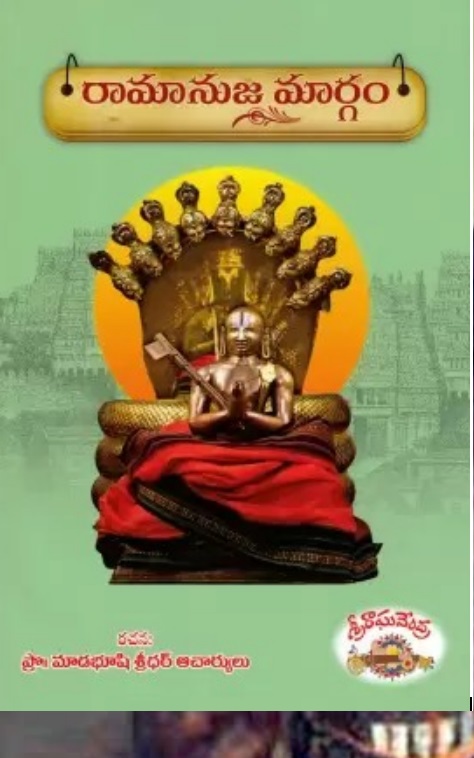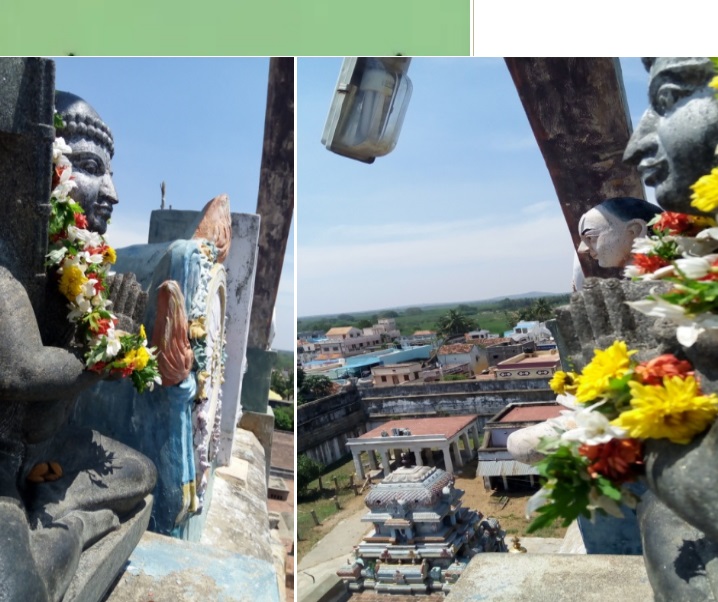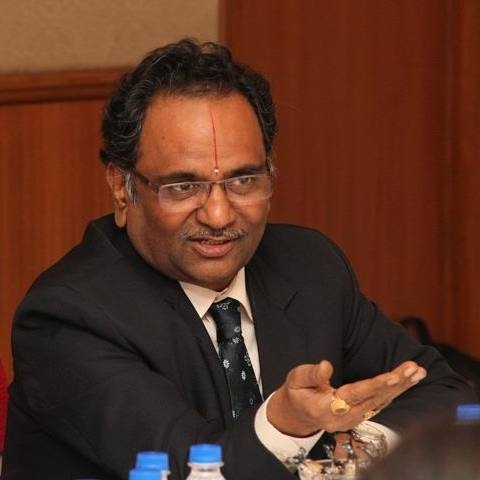Today is the 1007th birth anniversary of Ramanujacharya
Why returns Ramanuja 18 times?
(Dr Madabhushi Sridhar)
Born in 1017 CE, at Sriperumbudur, Ramanujacharya, is revered worldwide as a Vedic philosopher, social reformer and one of the most important exponents of Sri Vaishnava tradition (Statue OF Equality). In his 120-year life, travelled across Bharat, promoting EQUALITY among all citizens irrespective of their birth.) In Sri Vaishnavism a prostration is called Dandavat Pranaamam, which means falling like stick. Ramanuja fell like that looking at the hut offering his obeisance. It is believed that Ramanuja did not walk, instead prostrated offering obeisance’s until he reached the Acharya’s residence. That was the reverence he has shown to that great Acharya. By doing so he has sent a message to all villagers that amidst them a great saint is living. The villagers then realized his greatness who was not understood because of his simplicity. On hearing his voice, saying he was sent by Swamy Mahapurna”, Goshtipurna invited him inside. Ramanuja requested for the knowledge of esoteric truths of Thirumantram and Dwayam (Two mantras). Testing his steadfastness, Acharya asked ‘what I have to tell and to whom?’ Without a murmur, he left after prostrating, for Srirangam. When he went another time, Nambee said “No, not this time, Ramanuja, can you go and come again”. Ramanuja never ever imagined of a protest or felt irritated but simply reflected on the truth and calmly went back. Few days later, Goshtipurna had to attend the temple festival at Srirangam. It is believed that Lord Ranganatha recommended through the officiating priest, “do reveal all the divine knowledge to Ramanuja, who sought this in all the occult love of faith”. Then Nambi called Ramanuja to come alone, this time for knowledge. To his surprise, again it was “No”. Ramanuja should have been the example of perseverance as he attempted 18 times to gain divine knowledge without an iota of adverse feeling when he was turned down by his Acharya. Quoting Ghajni for perseverance is negative, destructive and improper. Repeated attempts with all sincerity and devotion without depression or negativity, for the purpose of enlightenment not for bloody and inhuman expansionism of material benefits, is the great attribute of Ramanuja, which every student or scholar should understand and practice. Initiating into Tirumantra and securing the intricacies and secret inner meanings of Astakshari mantra is worth trying any number of times. One can understand the rich value of the mantra that he could attain after walking from Kancheepuram or Srirangam to Tirukosthipuram 18 times at different times for about a decade.

He was not frustrated but felt something was impure in his heart. He always tried once again with more enthusiasm. He went back to Srirangam and was searching for means to secure knowledge from Goshtipurna. Suddenly he found a disciple of Nambi in Srirangam, whom he pursued a lot to know how to convince the Acharya. Though he could not show any way out, he went back represented strong devotion of Ramanuja that made Nambi to call Ramanuja with his staff and pennant, symbols of pontiff. Delighted Ramanuja reached with Dasarathi and Kooresha. As Goshtipurna was surprised to three persons, Ramanuja explained that Dasarathi, (Mudali Andaan) was his staff and Kooresa, the pennant. Pleased with Ramanuja’s exemplary conduct, Acharya took him to a secret chamber of his hut and revealed the extraordinary truths of the Thirumantra. Acharya explained “Ramanuja, this mantra is the granter of every boon, promoter of devotion and dispassion. This is the mantra all sages and saints constantly recite and bestowed of eternal bliss. He then gave him the inner meanings of Dwaya Mantra in detail.

“This is one and only glorious mantra that Lord Visnu alone knows its glory. I consider you are worthy to receive this great mantra, because you are pure and firmly fixed in devotion to the lotus feet of the Lord. I find none deserving to get this divine mantra now. Whoever chants this mantra will certain to go to Vaikuntha, abode of the eternal peace and happiness of the Lord after the death. Because this mantra is so pure and sacred, it must not be touched by the lips of anyone who has material desires. Therefore, you must not disclose the mantra to any other person”. After this introduction, Gosthipurna initiated him into the chanting of the Ashtakshari mantra of eight syllables, also called Tirumantra. But this initiation was not without a warning. He took promise him not to divulge it to all and sundry and cautioned him that a breach of promise would take Ramanuja to hell. Ramanuja was delighted and rejoiced with acquisition of this great knowledge. His heart filled with ecstasy, and he chanted it to experience the wonderful vibration. He began to glow with spiritual effulgence. Thanking Acharya profusely, Ramanuja performed multiple Saashtanga Pranama.
Bhagawad Ramanujacharya gave great messages (scripted by Sri Chinna Jeeyar Swamy)
Shed your ego.
Serve all beings as service to God.
Serve society which is the universal form of God.
Nobody is infallible.
Do not humiliate anyone.
All are equal in the eyes of God.
What is of supreme importance is purity of mind and deed.

(Author is Former Central Information Commissioner & School of Law Mahindra University, Hyderabad)
